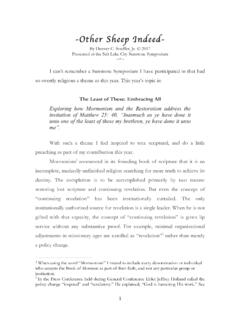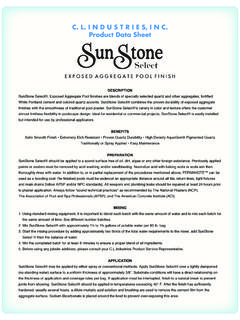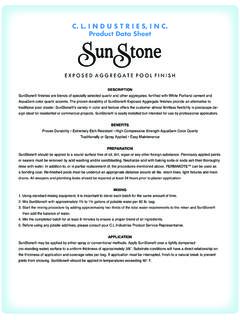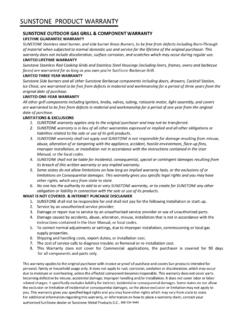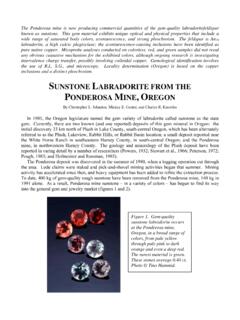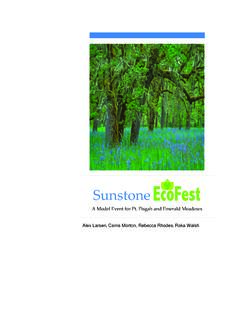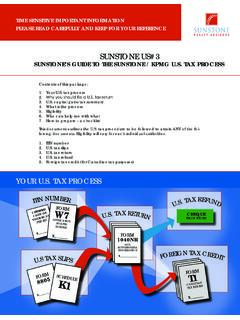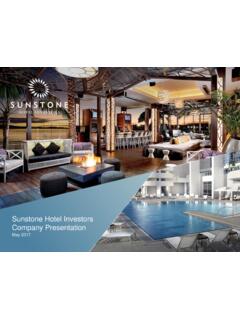Transcription of VIKING NAVIGATION USING THE SUNSTONE, POLARIZED …
1 ISSUE 93 PAGE 4 ISSUE 93 PAGE 5 NAVIGATION NOTESVIKING NAVIGATION USING THE sunstone , POLARIZED LIGHT AND THE HORIZON BOARDby Leif K. KarlsenHow did the Vikings manage to navigate across the open ocean for thousands of miles without conventional instruments? Many books have been written about their amazing voyages, but they don t of-fer much detail to explain their navigational methods. Furthermore, there are practically no navigational relics from VIKING era sites to reveal any secrets; most suspected NAVIGATION tools found so far have deteriorated beyond fill in this missing part of VIKING lore, we must try to imag-ine ourselves in that time driven to explore what lies beyond the sunset, possessing great common sense and courage, but lacking any tools and techniques of modern upon my experience as a modern navigator and on hints given in the sagas and in the old Icelandic lawbook, the Gr g s (Grey Goose), I firmly believe that the sunstone and some sort of a bearing board, similar to the horizon board described later, were used by the VIKING navigators to guide them across the North Atlantic, and to other destinations they reached.
2 These simple but effective aids to NAVIGATION allowed the Vikings to claim their place as one of history s great seagoing Vikings mostly sailed in the summer, when the northern lat-itudes are experiencing long days and short nights. Consequently, the Vikings depended on the sun rather than stars for NAVIGATION . At the latitudes where the Vikings sailed, no place in the region experienced true darkness in the summer. At latitude 61 North for example, from the end of April to the end of August the sun was available for more than 14 hours a day. At higher latitudes the sun was visible even longer. What more appropriate scheme could they have discovered to direct their ships, than to use sunlight refracted through a crystal found on the ground in Iceland? This crystal is called Iceland were times during certain conditions, such as fog, that the sunstone could have been used at sunrise and sunset by the nav-igator.
3 When very cold air moves over warmer water, wisps of vis-ible water vapor may rise from the surface as the water steams. In extreme cases this frost smoke, or Arctic sea smoke, may rise from a few feet to a height of several hundred feet. The portion near the surface forms a dense fog which obscures the horizon and surface objects, but usually leaves the sky relatively clear. Often in this type of fog, a ship passing by would have only the top of the mast showing with the surface fog obscuring the rest of the ship. When the light from the rising or setting sun was lost in the fog bank, but the zenith was cloudless, the navigator could tell the exact position of the sun by USING the sunstone , although the sun itself was unseen. Even on clear days, the horizon at sea is often obscured by haze or distant clouds.
4 This is an ideal situation for USING the sunstone to find the basic principle of the sunstone (Iceland spar) is polariza-tion of light, first described in 1669 by Erasmus Bartholimus, a Danish professor of mathematics and medicine, and a natural-ist. Later on in 1678 the Dutchman Christiaan Huygens is his Treatise on Light writes that he also studied the double refrac-tion Bartholimus had described in Iceland spar is also known as optical calcite and calkspat. In Iceland it is called Silfurberg. It is composed of molecules of calcium carbonate (CaCO3), with the calcium atoms arranged in planes in a crystal lattice. Such crystal shows a natural cleavage. The crystal can be split into smaller crystals, all the way down to tiny pieces, always with the same angles as the original 1.
5 The crystal has a rhombohedral crystal structure, its opposite faces are parallel but there are no right angles. A perfect crystal is colorless and transparent. The angles are 101 30 for the obtuse angle and 78 30 for the acute angle. The structure of the crystal leads to the optical phenomenon of double refraction. An object viewed through the crystal will be seen as a double sunlight is unpolarized, but the reflected sunlight that we observe in the blue sky is partly POLARIZED . When sunlight passes through the earth s atmosphere it is scattered in all directions. The scattering is strongest for blue, the frequency in the visible range nearest to ultraviolet, thus giving the sky its characteristic blue ap-pearance. At sunrise and sunset, the light reaching the observer has traveled farther though the atmosphere and those frequencies in the blue range have been removed by previous scattering.
6 This allows the yellow and reds to predominate near the horizon in the twilight 93 PAGE 6 ISSUE 93 PAGE 7 The scattering of sunlight by the atmosphere produces polar-ized light for a navigator looking at right angles to the direction of the sun, for instance, if he looks straight up at sunrise and sunset. If he is looking towards the sun, he sees unpolarized light that con-tains more red than earth s atmosphere serves as a polarizer. If the sunstone is placed horizontal when the sun is on or near the horizon, it serves as an analyzer. The sunstone provides a directional reference dur-ing twilight, or when the sun is near the horizon in a fog bank, or behind an island, provided only that the zenith is Demonstration USING Iceland spar is well known material for its double refraction.
7 When unpolarized light enters a calcite crystal it is split into two linearly POLARIZED beams which are refracted by a different amount. The ordinary ray obeys the law of refraction; the extra ordinary does not, it bends away from the ordinary as it enters the crystal. The or-dinary and the extra ordinary rays follow different paths inside the crystal, but when leaving the crystal they follow parallel a small mark on a piece of paper and place the crystal over it. You will see two distinct marks; both of them sharp an clear. Slowly rotate the crystal. One image will remain stationary as the crystal is rotated, this ray is called the ordinary ray. However, the other image will rotate with the crystal, making a small circle around the ordinary image.
8 This is called the extra ordinary order to use a crystal as a sunstone for finding the sun, a small black dot is placed at the center of the top surface, so it will face up when the stone is held overhead. View this dot from under-neath by looking up through the stone while holding it level to the horizon. You will notice the single dot appearing as two dots when viewed through the a pointer to one of the long sides of he crystal, and point it towards the brightest area of the sky. Upon rotating the stone back and forth in the horizontal plane, you will see that one image fades and the other becomes darker. When the two images appear to be equal in value, note the position of the stone and pointer. The pointer is now aligned to the true bearing of the sun.
9 It is accurate to within one accuracy, the sunstone must be level and have an unob-structed view of the zenith, for if light does not enter the sunstone perpendicularly, an error is introduced. A thick cloud layer over-head scatters the POLARIZED light from zenith, preventing the use of the Iceland spar crystal will work as a sunstone as long as it is optically clear. The thickness of the crystal is important. The thicker the crystal, the better is the refraction (separation) of the black at sunsetApril 25th, 2006 Location: Port Orchard, WA USAP osition: 48 North, 122 WestA bearing was taken at my home at 20:04:28 local time, (GMT 03:04:28) April bearing was taken shortly before sunset. The location of the sun was not visible, the sun was setting behind the forest.
10 The ze-nith was cloudless. I had made a pedestal with a cutout hole for the sunstone , which sat on a mirror placed on a rotating wooden disk. It also contained two sighting pins on top. Instead of holding the stone up in the air and bending my neck backwards to look through from underneath, I could just glance into the mirror to adjust the stone. ISSUE 93 PAGE 6 ISSUE 93 PAGE 7 Figure I lined up the stone toward the relative brightness of the evening sky. Then it was rotated slowly back and forth until the double image was equal in value. I noted the exact time. I left the stand in a stationary position. Then a bearing was taken of the position of the stone, USING the two sighting pins on top of the stand. This bearing was taken with a magnetic compass (Silva).
